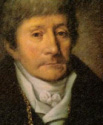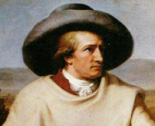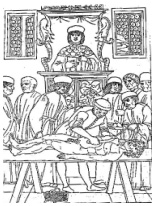|
Welcome to the website
of
The GAM/DP Theory of Personality and
Creativity.
Volumes 1 to 6
by William A. Therivel, PhD
ISBN 1-886513 (50-3; 51-1; 52-X; 53-6; 63-5), Hardbound,
$40
Willam Therivel - found at Amazon
The GAM/DP theory
deals with what makes an individual creative, and what
makes a society creative.
G stands for genetic endowment, A for
assistances, M for misfortunes, DP for
division of power (UP for unity of power).
Why are some people eminently creative? What explains
the nature of their creativity, their interest in broad
all encompassing solutions or the in-depth analysis of
man's good and evil? Why are some creators luminous and
brilliant, and others somber and bitter?
The answers to these questions rest first in their
personality, then in the world around them which nourished
them; in understanding the individual potential for
creativity and the nature of that potential, then in
why a given city, nation, culture or civilization fosters
creativity or impedes it.
The GAM part of the theory focuses on the basis
of the potential for creativity; the DP part
of the theory focuses on understanding how the ethnopsychology
of a given people is shaped, changes over time, and
fosters or hinders individual creativity.
GA/DP
The potential for creativity can be expressed by the
formula GxAxMxDP. To be creative, one must be
born with a good Genetic Endowment (e.g., for
intelligence, temperament, specific talents), must have
received supportive Assistances (e.g., from parents,
relatives, schools, teachers, and playmates), and must
have lived in a stimulating place open to new ideas,
possible only under economic, political, and ideological
Division of Power.
M
The novelty of the GAM theory is its emphasis
on the study of M (the misfortunes of youth).
Major misfortunes prevent the acquisition of normal
parental and societal scripts. A vacuum of normal scripts
leads to the questions, "Who says so?" and
"Why?"
Tolstoy once said: "Happy families are all alike,
every unhappy family is unhappy in its own way."
And yet some misfortunes of youth are more creativogenic
than others, and people who suffer similar misfortunes
of youth, have similar personalities (at the level of
their philosophy of life).
The most creativogenic misfortunes of youth-- if backed
by a strong GxAxDP which allows the youth to understand
and profit from them-- are: early parental death (Bach,
Buddha, Dante, Newton, Tolstoy), father failure of character/profession
(Goethe, James Joyce, Mozart, Picasso), physical infirmity,
suffered lack of parental love, parental domination,
suffered illegitimate birth, and downfall of the family's
social economic status. Each type of misfortune leads
to the build-up of individual scripts which will then
conflict with those of society in a life-long war
of the scripts: the tension and material for creativity.
GAM can be used in two ways: first in the discussion
of the youth of individual eminent creators and how
their key misfortunes impacted their personality and
creativity, and second in posing and answering original
questions.
Why are some people eminently creative? Questions
posed and answered by the GAM part of the theory:
- Why Mozart and not Salieri? 1:21
- Why did Heidegger write a poem entitled "Gethsemane
Hours"? 1:26
- Why did Leonardo paint 16 incongruous horses
in his Adoration of the Magi? 5:8
- In whose astonishing company is God in Michelangelo's
Creation of Adam? 5:32
|
 |
 |
| Mozart |
Salieri |
|
Through GAM we can discover why a writer/thinker became
a Berlinian hedgehog or fox2 , and why
a painter or sculptor became a Newtonian classic,
romantic, or realist creator, in the classification
by Eric Newton. (1:9, 3:2, 3:7).
For instance:
 |
- Italo Calvino and Goethe: Foxes 3:5
- The Berlinian arch-fox Isaiah Berlin.
4:6
- Master fox James Joyce. 1:10
|
 |
| Goethe |
|
Calvino |
Subsequently, the study of the youth of eminent creators--linked
to a new classification of creativity from C1 to C10--led
to the following observation (3:1):
- Gifted/talented children (high GxA) will (should)
become successful professionals; challenged
children (high GxAxM) will (should) become geniuses.
DP
The second part of the theory states that long periods
of division of power, DP (e.g. when power is
fought or grudgingly shared between state and church;
when two or more major ideologies fight each other)
give origin to the visitor personality. Alternatively,
long periods of unity of power, UP (one single
ruler or dominating hierarchy, one single dominating
ideology) promote the insular personality.
DP fosters critical thinking. Visitors
have the courage to speak their mind, to be creative
on matters that are not those of the power holder; they
go places and take risks, because in case of trouble
with power A, they can seek help from power B. Therefore,
visitors take initiatives for the common good
because they do not trust the supremo who is
more interested in his personal power and glory. Visitors
are creative, insulars are not.
Why do some societies foster creativity?
Questions posed and answered by the DP part of the
theory:
- Would we have had scientific medicine without
the public dissections performed under the DP
of Bologna in 1315 by Mondino de' Luzzi? 1:13,
4:14; 5:23
|
 |
- Which power condition (DP or UP) shaped the evolution
of the Christian iconography: from Jesus the Good
Shepherd, to Jesus the Pantocrator, to Jesus of the
People "Jesus 2000"? 4:10
- Why did Venice have no great writers when it had
great painters, architects and musicians? 4:13
- Did the Mandarins kill the Chinese civilization?
1:19
- How did 18th century America produce so many great
men? 5:25
- How did 19th century Russia produce so many great
men? 5:27
- A UP explanation of Argentina's difficulties 4:16
- A DP explanation of the liberating power of the
English Bible 3:11
 |
| Another important ethnopsychological type
is the ritter (knight/warrior), shaped
by the partial unity of power of the German
princes (1:25); and the strict ritter,
shaped by the partial unity of power of the
Japanese daimyo (3:9). |
|
 |
In turn these two chapters lead to such questions as
:
- Why did the famous German Kultur fail? 5:16
- Why do Americans work longer if they succeeded at
the first task, while the Japanese work longer if
they failed? 4:21
1The numbers indicate volume:chapter.
2According to Isaiah Berlin, hedgehogs
relate everything to a single central vision, a single,
universal principle, through which all that they are
and say has significance; foxes pursue many,
often unrelated and even contradictory ends. Eminent
hedgehogs were Dante, Plato, Pascal, Dostoyevsky,
Nietzsche, Proust; eminent foxes were Shakespeare,
Molière, Goethe, Pushkin, Balzac, Joyce.
|